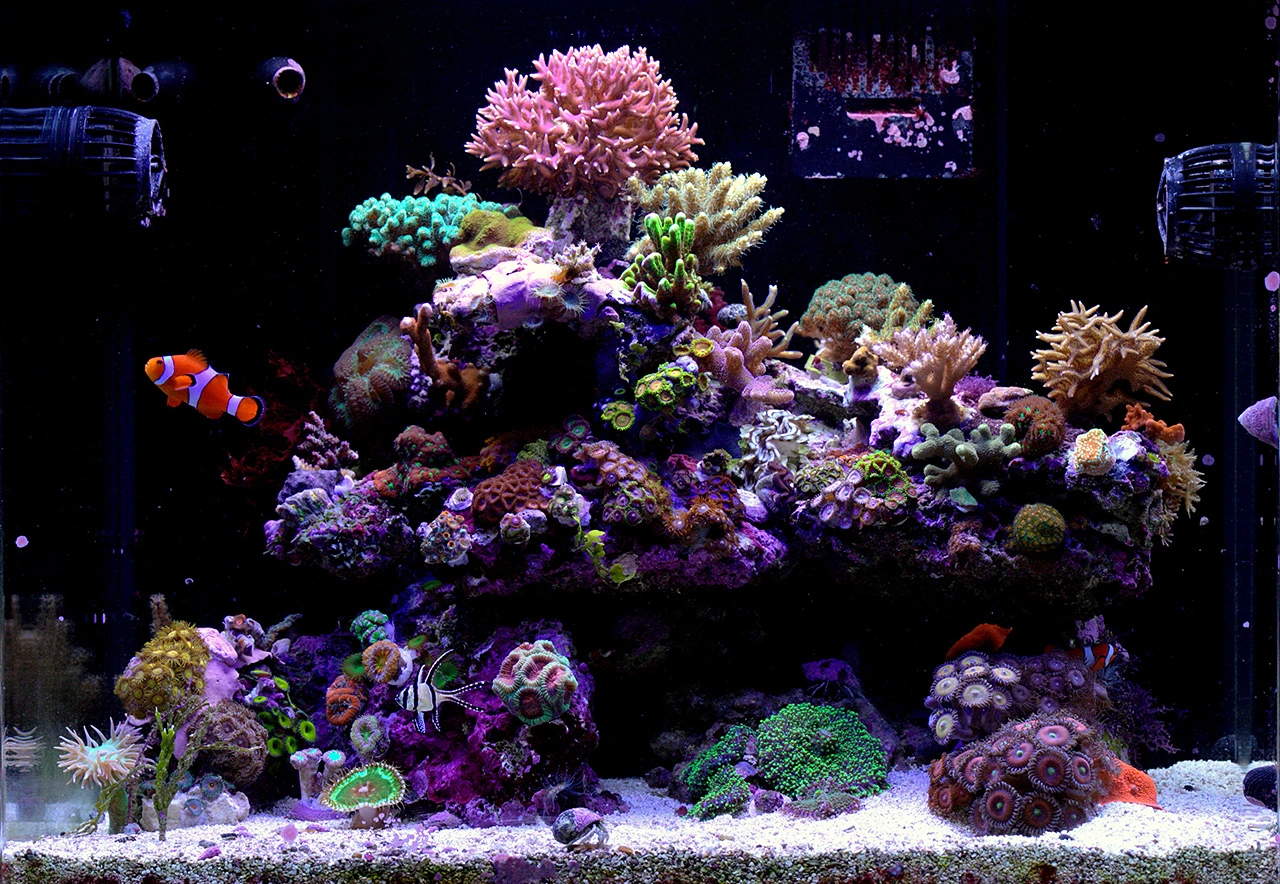Stunning 34-Gallon Reef Tank – metrokat's TOTM | NanoReef

Tank Specifications
Volume: 34 Gallons / 128 Liters
Dimensions (L × W × H):
24.0" ×
20.0" ×
23.8"
61.0cm ×
50.8cm ×
60.5cm
Equipment List
- Salt: Red Sea
Frequently Asked Questions
How should I set up a display refugium?
To set up a display refugium, first ensure you have adequate space in your sump or the main tank. The refugium should have live rock, macro algae, and possibly soft corals. It’s key to keep it on an opposite light cycle to the display tank to maintain stable parameters. Use a low-flow pump to circulate water, and make sure to equip it with proper lighting, like a low-wattage LED that can promote algae growth.
What equipment do I need for a nano reef tank?
For a nano reef tank, essential equipment includes a quality protein skimmer, a heater, a reliable filtration system (like a custom sump), powerheads for water movement, dosing pumps for calcium and alkalinity, and lighting suitable for corals (such as T5 lights supplemented with LEDs). Additionally, consider adding a bioreactor for carbon or phosphate control.
How often should I perform water changes and what are the best practices?
Perform water changes weekly or bi-weekly, changing about 10-15% of the water. Use high-quality salt mixes like Red Sea Coral Pro mixed with RO/DI water. Always test your water parameters before and after changes to ensure stability.
What is the best way to clean filter socks?
Clean filter socks every 3-4 days by rinsing them in fresh water to remove debris and organic waste. You can also machine wash them on a gentle cycle with no detergent or bleach. This prevents clogging and helps maintain good water flow.
What is a good feeding schedule for reef tank inhabitants?
A varied feeding schedule works best for a healthy reef tank. Rotate between high-quality frozen foods, dry pellets, and prepared live foods daily. For example, offer Reef Nutrition ROE one day, followed by mysis shrimp the next, and alternate with spirulina flakes or algae wafers. Plan to include a variety of foods to meet the dietary needs of all species.
Is there a recommended method for culturing phytoplankton?
To culture phytoplankton, use clear containers filled with seawater or dechlorinated freshwater. Add nutrients formulated for aquatic life. Provide light (preferably a grow light) for 12-18 hours a day and maintain temperatures around 20-25°C. Harvest by siphoning off a portion without disturbing the sediment at the bottom.
How do I ensure the successful growth of different coral types together?
Mixing different coral types requires attention to their water flow and light preferences. Ensure corals with different needs are positioned appropriately within the tank, use good filtration, and maintain stable water parameters. Regularly monitor for aggressive interactions, especially between SPS and LPS corals.
What types of macro algae can I keep in my reef tank and their benefits?
Common macro algae include Chaetomorpha, halimeda, and gracilaria. These algae help in nutrient export, preventing nuisance algae growth, and can provide shelter for small marine creatures. Ensure that the macro is placed in a well-lit area and clipped back regularly to promote growth.